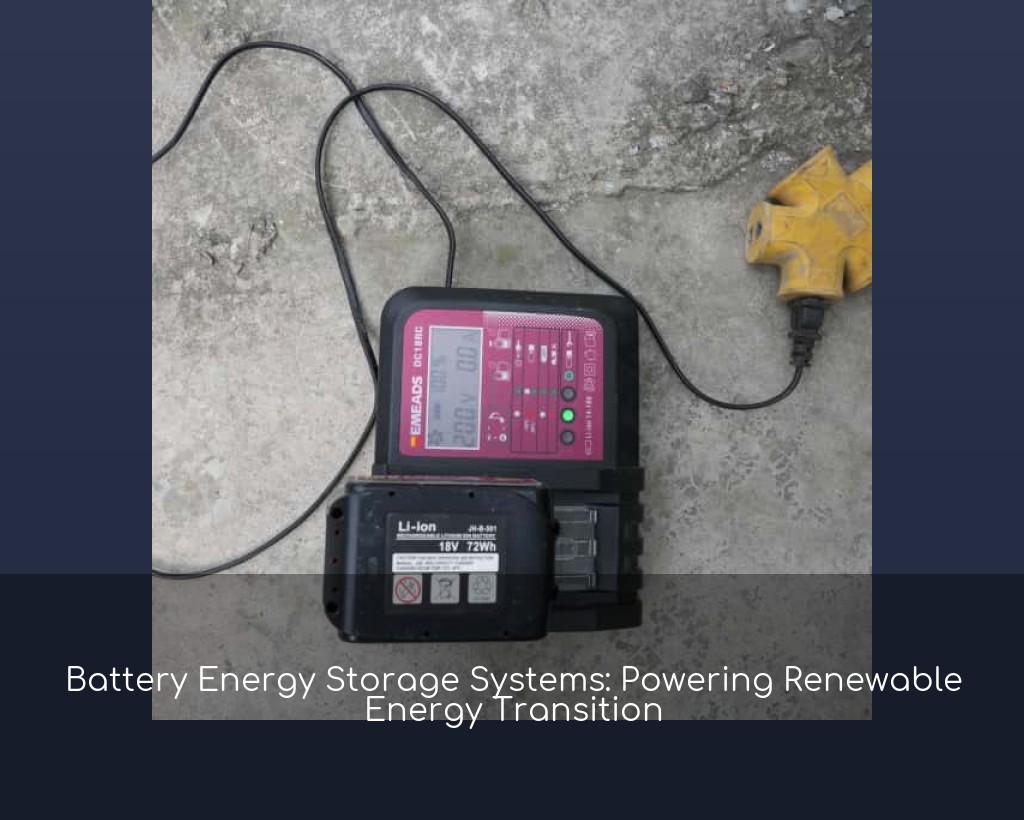Battery Energy Storage Systems: Powering Renewable Energy Transition
You know how people talk about renewable energy like it's some magic bullet? Well, here's the kicker: solar panels don't work when it's cloudy, and wind turbines stand still on calm days. This intermittency problem costs the global economy $12 billion annually in wasted clean energy - enough to power 15 million homes. That's where battery energy storage systems (BESS) come charging in, quite literally.
Battery Energy Storage Systems: Powering Renewable Energy Transition

Table of Contents
Why Energy Storage Can't Wait
You know how people talk about renewable energy like it's some magic bullet? Well, here's the kicker: solar panels don't work when it's cloudy, and wind turbines stand still on calm days. This intermittency problem costs the global economy $12 billion annually in wasted clean energy - enough to power 15 million homes. That's where battery energy storage systems (BESS) come charging in, quite literally.
Take California's 2024 grid emergency. When a heatwave spiked demand, their 3.2 GW battery fleet discharged enough electricity to prevent blackouts for 2 million residents. This real-world success story proves BESS isn't just supplementary - it's becoming the backbone of modern grids.
The Economics of Energy Shifting
Commercial operators are waking up to BESS profitability. A recent UK project demonstrated 27% ROI through peak shaving and frequency regulation. The secret sauce? Lithium-ion batteries now cost $98/kWh - 80% cheaper than 2015 prices. But wait, there's a catch...
The Anatomy of Modern BESS
Modern systems combine four core components:
- Battery racks (typically Li-ion NMC or LFP chemistry)
- Power conversion systems (PCS) with 98% efficiency ratings
- Thermal management maintaining 25°C±2°C
- AI-driven energy management systems (EMS)
That last component's crucial. The EMS acts like a chess master, predicting energy prices 48 hours ahead while balancing:
"Cell-level degradation patterns against real-time market signals - it's like keeping 10,000 plates spinning simultaneously." - Dr. Elena Marquez, GridX Technologies
Battery Chemistry Showdown
While lithium-ion dominates 92% of new installations, alternatives are emerging. Vanadium flow batteries last 20,000 cycles versus Li-ion's 6,000, but their $400/kWh price tag keeps them niche. Sodium-ion prototypes show promise at $65/kWh, though energy density remains 30% lower.
Storage Solutions in Action
Consider Hawaii's Kauai Island Utility Cooperative. Their solar-plus-storage project delivers 11% of the island's power after sunset, reducing diesel consumption by 8 million gallons annually. The secret? Predictive analytics matching cloud cover patterns with discharge rates.
Or look at Germany's new residential solar-plus-storage mandate. Homes installing PV must include at least 4kWh storage capacity - a policy driving 220% year-over-year growth in home battery sales.
When Maintenance Matters
A Texas wind farm learned this the hard way. Undetected battery stratification caused 18% capacity loss within 18 months. Advanced EMS now prevent this through adaptive equalization charging, but it requires constant monitoring. As one engineer quipped: "BESS are like houseplants - neglect them and they'll die quietly."
The Future Is Modular
Containerized BESS solutions are changing the game. Singapore's new 285 MWh floating storage system uses standardized 2.4 MWh modules, slashing installation time from 18 months to 26 weeks. This plug-and-play approach could revolutionize developing markets where grid infrastructure lags behind energy demand.
So where does this leave us? The storage revolution isn't coming - it's already here. From suburban homes to national grids, energy storage systems are rewriting the rules of power delivery. The question isn't whether to adopt BESS, but how quickly we can scale deployment while maintaining safety and profitability. One thing's clear: in the race to decarbonize, batteries are our most reliable pace car.
Related Contents

Battery Energy Storage Systems: Powering the Renewable Energy Revolution
our renewable energy storage infrastructure is kind of like a leaky bucket. We're pouring in solar and wind power faster than ever (global renewable capacity grew 50% last year alone), but without proper storage, we're losing precious resources. The real kicker? Utilities worldwide wasted enough clean energy in 2024 to power Germany for three months. That's where Battery Energy Storage Systems (BESS) come charging in.

Battery Energy Storage Systems (BESS): Powering the Renewable Energy Revolution
California's grid operators curtailed enough solar energy in 2023 to power 1.5 million homes for a year. That's the equivalent of throwing away 1.4 billion pounds of coal's energy potential. Meanwhile, Texas faced rolling blackouts during a winter storm while wind turbines stood frozen. This energy paradox - abundance vs. scarcity - lies at the heart of our renewable energy challenges.

Battery Energy Storage Systems: Powering Germany's Energy Transition
You know how Germany's famous for shutting down nuclear plants while pushing renewable energy integration? Well, here's the catch: solar and wind now contribute 46% of electricity, but their variability creates 300+ annual grid instability events. Traditional "spinning reserves" using fossil fuels can't react fast enough - they typically need 15 minutes to ramp up. That's where BESS steps in, responding within milliseconds.

Large-Scale Battery Storage Systems: Powering Renewable Energy Transition
You know how everyone's hyping solar panels and wind turbines these days? Well, here's the kicker: large-scale battery storage systems are actually the unsung heroes making renewables viable. Without them, that clean energy literally disappears into thin air when clouds roll in or winds die down.

Battery Energy Storage Systems: Renewable Energy's Missing Link
Let's cut through the jargon: a Battery Energy Storage System isn't just a fancy battery pack. Think of it as the conductor of an orchestra where lithium ions are the musicians. The real magic happens in the battery management system (BMS) - the unsung hero preventing your neighborhood's solar array from turning into a Roman candle.
